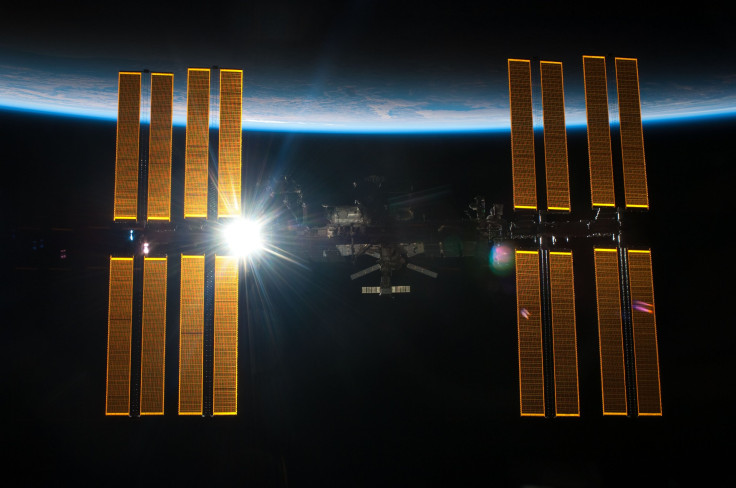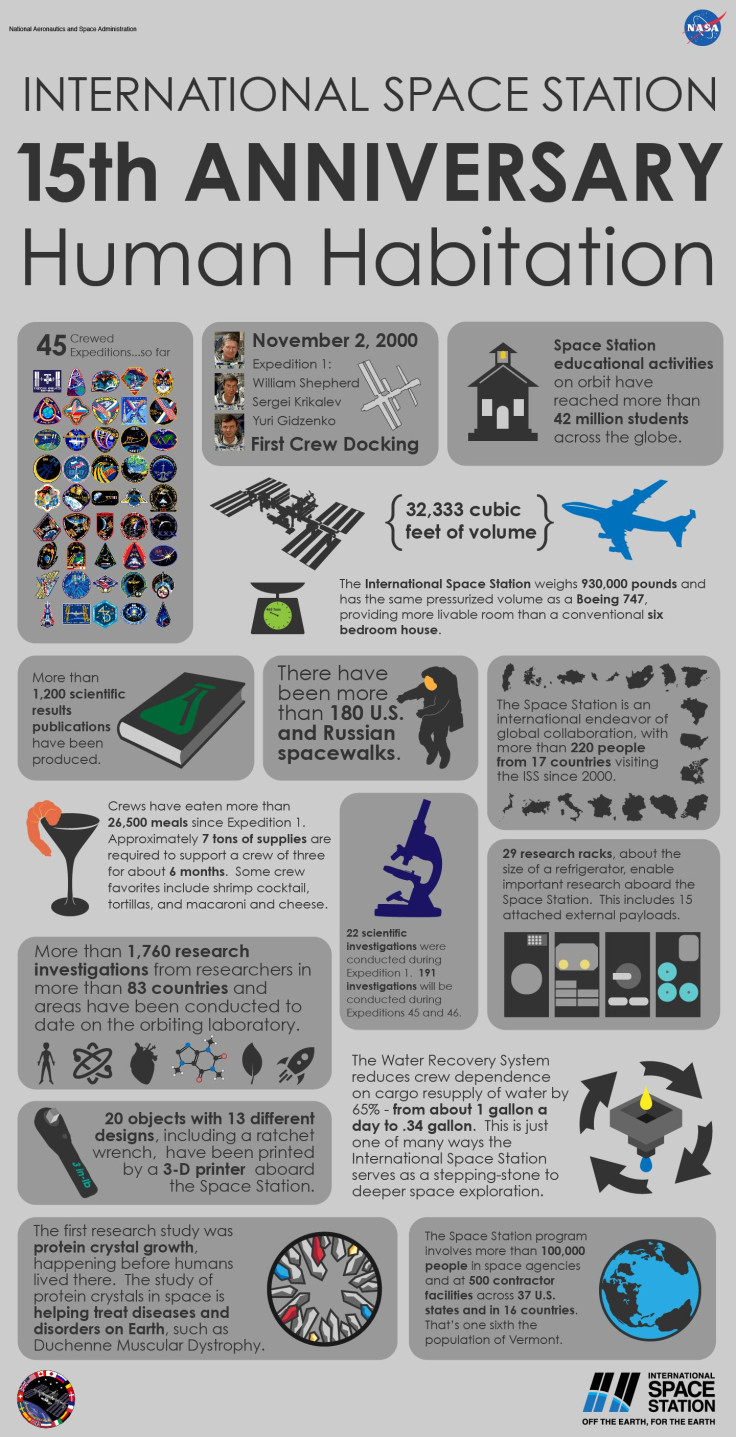International Space Station 15 Year Anniversary: So Many Crews, So Many Experiments, But What's Next For The ISS?

On Nov. 2, 2000, NASA astronaut William Shepherd and cosmonauts Sergei Krikalev and Yuri Gidzenko became the first residents of the International Space Station. In the 15 years since, the space station, currently in low Earth orbit, has housed 45 crews that have conducted thousands of scientific experiments. The space station's future is uncertain, but its benefit to humans will continue long after the ISS makes its controlled descent back to Earth.
The ISS is set to be retired in 2024, and there are no plans to replace the incredibly successful science lab. The U.S. spends around $3 billion a year to maintain the space station, the Washington Post reported. The total cost of the ISS -- funded by Russia, the U.S., Japan, Canada and Europe -- is estimated to be $160 billion.
The ISS currently houses Scott Kelly, the record holder for most time in space for a NASA astronaut. Kelly is part of the one-year crew, along with cosmonaut Mikhail Kornienko, evaluating the long-term effects of microgravity on the human body. Those insights are shaping the journey to Mars, but the science investigations aboard the space station also benefit humans on Earth.
"For 15 years, humanity’s reach has extended beyond Earth’s atmosphere. Since 2000, human beings have been living continuously aboard the space station, where they have been working off-the-Earth for the benefit of Earth, advancing scientific knowledge, demonstrating new technologies, and making research breakthroughs that will enable long-duration human and robotic exploration into deep space," NASA administrator Charles Bolden said in a statement.
Scientific investigations aboard the space station have led to clean water being available in different parts of the world and improved understanding of osteoporosis and, in the future, Alzheimer's disease. Technology that was behind the space station's robotic arm, dubbed Canadarm, is found in the neuroArm, which is capable of operating on brain tumors inside an MRI machine, according to NASA.
The International Space Station mission has been extended to 2024, but it's unclear if anything can replace the venerable craft. Boeing and SpaceX were awarded contracts to bring manned launches back to the U.S., with test launches scheduled for 2017. NASA has not announced plans for an ISS replacement, but Russia has stated it would be willing to work with the space agency on a successor. China wants to develop its own space station, with plans to launch the Tiangong 2 in 2016 followed by plans for a complete space station by 2020.
"The ISS is the most complex and challenging engineering endeavor in history. The key to its success has been the combination of NASA ingenuity and international cooperation. With a partnership that includes 15 nations and with 68 nations currently using the ISS in one way or another, this unique orbiting laboratory is a clear demonstration of the benefits to humankind that can be achieved through peaceful global cooperation," Bolden said.

© Copyright IBTimes 2025. All rights reserved.




















